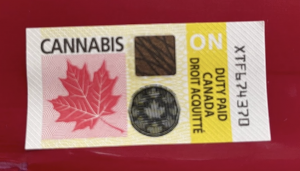7.4 Examples of Legalization

- In 1996, California became the first US state to legalize medical cannabis. By February 2022, 37 states, Washington D.C. and four of five US territories had followed suit (Reuters, 2022).
- In 2012, Washington and Colorado became the first two US states to legalize recreational cannabis (Coffman & Neroulias, 2012; Hansen et al., 2022). This number has steadily increased and as of February 2022, 17 U.S. states, Washington D.C. and Guam regulate the production, sale, and recreational use of cannabis products (Hansen et al., 2022).
- In 2013, Uruguay became the first country in the world to fully legalize both cannabis possession and a cannabis supply chain (Queirolo, 2020). To access or grow cannabis, Uruguayans must register with the government. Cannabis supply can either come from licensed pharmacies or by growing it, individually or as part of a cannabis grower’s club (Hall, 2020).
- In October 2018, Canada became the second nation in the world to legalize recreational cannabis via the Cannabis Act. The Act was amended one year later to allow for the production, sale and use of cannabis edibles (Canada, 2021; Canada, 2019). The Canadian policy is framed as a public-health oriented approach (i.e., advertising bans, plain packaging requirements, taxes tied to THC content) (Hall, 2020).
- In November 2020, Oregon passed Measure 109: Psilocybin Program Initiative. This initiative legalizes psilocybin for use in supervised and licensed therapy sessions to qualifying individuals over 21 (Roberts, 2020).

Click the links below to learn more about the Cannabis Act (2018) and cannabis legalization in Canada:
Cannabis Legalization and Regulation
Final Regulations: Edible Cannabis, Cannabis Extracts, Cannabis Topicals

